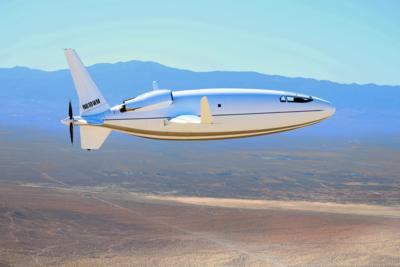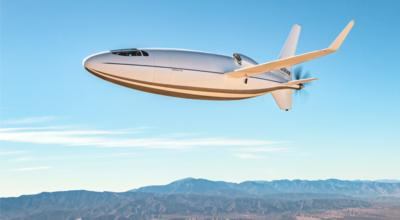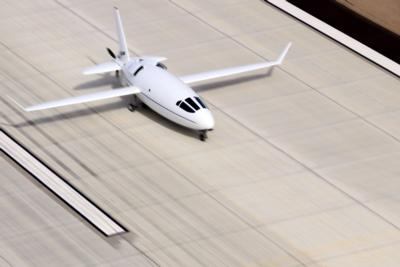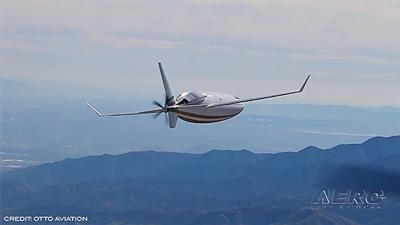Thu, Nov 18, 2021
Lithe V12-Powered Private Jet Competitor Done with Phase 1 Testing
Otto Aviation has completed testing of its Celera 500L Aircraft, marking 51hours of flight time across 55 successful flights. The aircraft's final phase 1 test flight was flown entirely on sustainable aviation fuel, furthering the brand's goal of sustainable but commercially viable business aircraft.

The Celera is designed to merge "the convenience of private air transportation but at a significantly lower cost and a dramatically reduced carbon footprint," according to Otto's website. Citing expected fuel economy of 18-25 miles per gallon against a private jet's equivalent 3 mpg, and hourly operating cost under $330 an hour, Otto sees their plane as the future of green intercontinental private travel. With a 4,500 nm range, seating for 6, first-class cabin accommodations, and a max cruise over 460 mph at 50,000 feet, the Celera is shaping up to be a powerful contender if it can meet its targets.
Phase 1 testing sought to compare the prototype against industry standards and refine the design of the Celera with real-world data. Throughout a few test flights, the team visualized the laminar flow state with a precision infrared camera mounted on a chase aircraft, quantifying extensive laminar flow capability over all external surfaces. Wing and fuselage surfaces were gauged for robustness and gathered additional data for use in strengthening the upcoming production vehicle.

Working with Cal Poly's Boundary Layer Data System, Otto was able to go further than regular friction analysis, quantifying the exact friction state of the aircraft to customize a series of tailored boundary layer rakes and find the cumulative effect of laminar friction in flight. The optimizations are important to reach their milestones, reaching similar performance figures to light jets using a liquid cooled, V12 with 550 horsepower. The Celera boasts drag about 41% of similar sized, conventional aircraft, and a 22:1 glide ratio.
Otto's timeline plans to offer a B Round of funding, while they begin FAA certification and find a home base. As development continues and orders are accepted, a C Round is expected to run from 2023 to 2025, when they will build a manufacturing facility and complete initial commercial deliveries.



More News
From 2023 (YouTube Edition): "Ain’t Your Daddy’s Super Cub”—Don Wade Co-owned by Don and Ron Wade—the former of Don’s Dream Machines, a storied >[...]
Pilot-Rated Passenger Reported That The Pilot Did Not Adequately “Round Out” The Landing Flare And The Airplane Bounced And Yawed To The Right Analysis: The pilot state>[...]
Dead Reckoning Dead reckoning, as applied to flying, is the navigation of an airplane solely by means of computations based on airspeed, course, heading, wind direction, and speed,>[...]
Aero Linx: Lake Amphibian Club This website is created and sponsored by the Lake Amphibian Club, to help spread the word about these wonderful, versatile amphibians that can land j>[...]
“I am deeply honored to be sworn in as NASA administrator. NASA’s mission is as imperative and urgent as ever — to push the boundaries of human exploration, ignit>[...]
 Classic Aero-TV: In Praise of Alabamas Patriot Aircraft USA
Classic Aero-TV: In Praise of Alabamas Patriot Aircraft USA NTSB Final Report: Cirrus Design Corp SR22
NTSB Final Report: Cirrus Design Corp SR22 ANN's Daily Aero-Term (12.21.25): Dead Reckoning
ANN's Daily Aero-Term (12.21.25): Dead Reckoning ANN's Daily Aero-Linx (12.21.25)
ANN's Daily Aero-Linx (12.21.25) Aero-News: Quote of the Day (12.21.25)
Aero-News: Quote of the Day (12.21.25)






